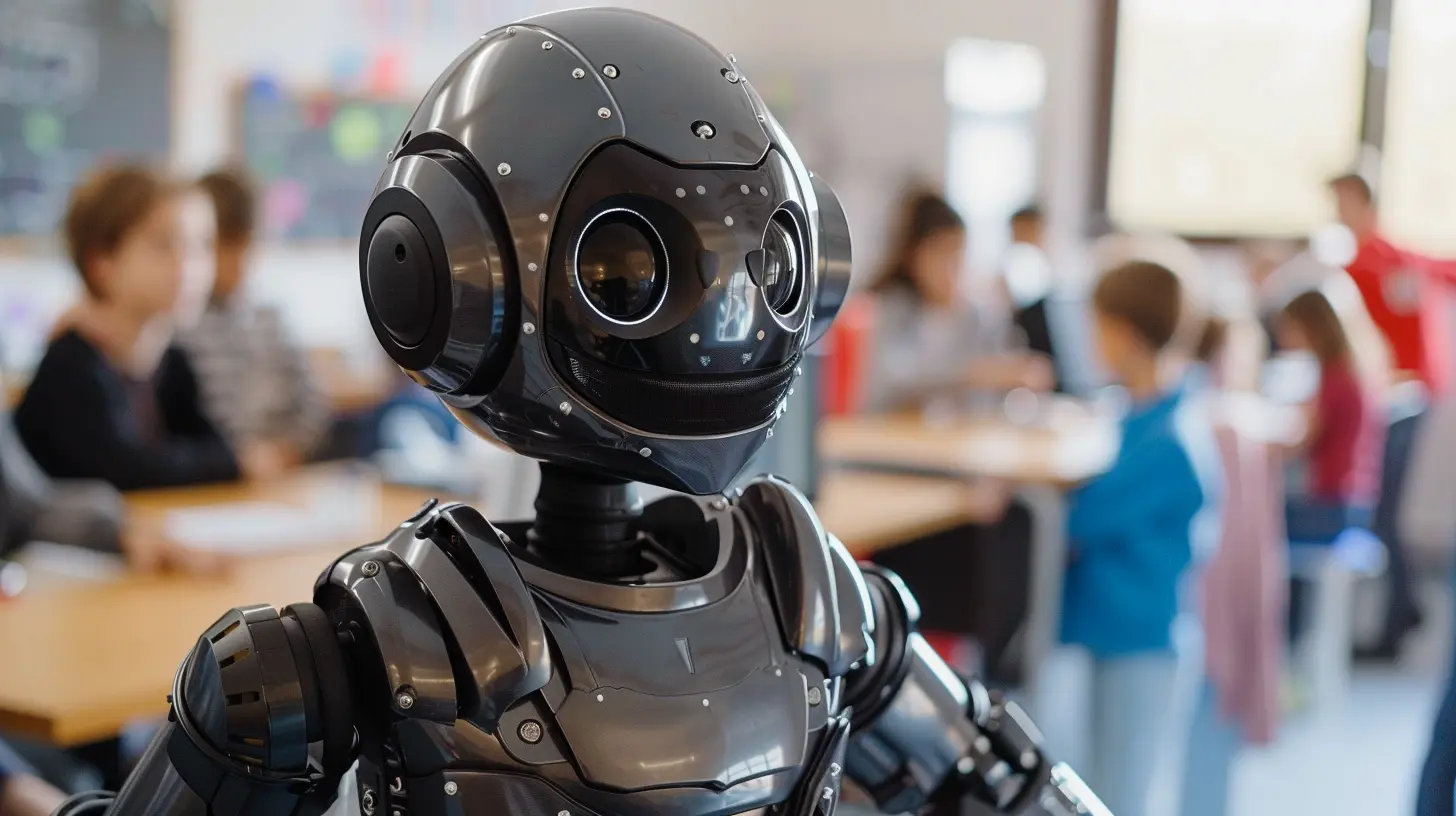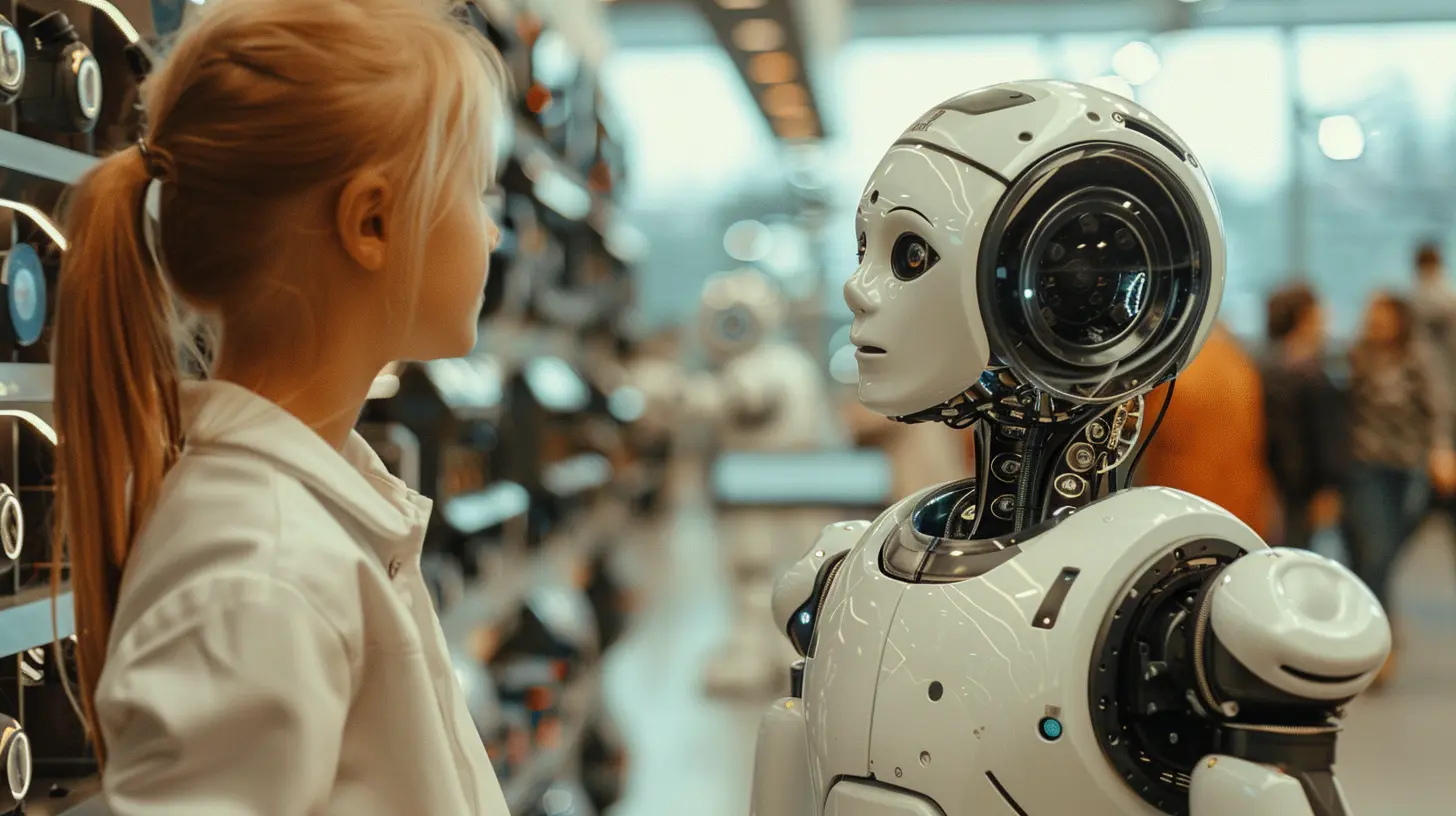The Role of Robotics in Teaching Problem-Solving Skills
17 October 2025
Have you ever watched a child light up with excitement when building a robot? Or seen the sparkle in a student's eye when they solve a tricky coding problem with their robot? There's something magical about combining creativity, tech, and hands-on learning. And that magical combination is exactly why robotics is becoming such a powerful tool in education, especially when it comes to teaching problem-solving skills!
We’re living in a fast-paced, tech-driven world—and our kids need to be ready for it. It’s not just about learning facts anymore. It’s about thinking critically, adapting quickly, and solving real-world problems creatively. That’s where robotics steps in, like a friendly, futuristic mentor. So, grab a cup of coffee (or tea), and let’s dive into the joyful world of robotics in education!
Why Problem-Solving Skills Matter More Than Ever
Let’s start here: Why is everyone suddenly talking about problem-solving like it’s the holy grail of skills?Well, it kind of is.
Think about how the world is changing. Technology is evolving faster than ever. The jobs our kids will have probably don’t even exist today. That means students need more than memorized facts—they need to know how to think. Problem-solving is the foundation of every challenge we face, from troubleshooting a broken app to designing a sustainable city.
Problem-solving helps students:
- Think logically and critically
- Make decisions based on evidence
- Collaborate with others
- Stay calm when things go wrong
- Adapt to new situations
And guess what? Robotics is the perfect playground for building all those skills.
What Exactly Is Educational Robotics?
Before we go any further, let’s break down what we mean by “robotics in education.”Educational robotics involves using robots—whether physical or virtual—as tools for learning. Students might build and program the robots themselves or work with pre-built ones through guided activities. The goal isn’t just to create cool robots (although that’s a nice bonus), but to use the process to teach valuable skills.
It blends science, technology, engineering, art, and math (yes, we’re talking about STEAM) in a fun, hands-on way that keeps learners engaged. Think of it like this: robotics is the recipe, and problem-solving is the secret sauce.
How Robotics Sparks Problem-Solving in Students
1. Trial and Error Becomes a Superpower
In robotics, nothing works perfectly the first time—and that’s the point!Students learn to try, fail, adjust, and try again. That’s problem-solving in action. It teaches resilience and persistence. Instead of being afraid of failure, students start to see it as just another step in the process.
It's kind of like riding a bike. Remember falling a few times before getting it right? Robotics gives students the safe space to “fall” and encourages them to keep getting back up.
2. Real-World Scenarios Build Critical Thinking
Robotics challenges often mimic real-world issues. Maybe students have to build a robot that can sort recyclables, or one that can follow a specific path without bumping into obstacles.These are not just abstract puzzles—they’re grounded in reality. Students must analyze the situation, break it down into smaller pieces, brainstorm solutions, and test their ideas. That’s as real as problem-solving gets.
3. Immediate Feedback Keeps It Exciting
Here’s what’s cool—when students program a robot, they see the results instantly. If it works, they cheer (literally). If it doesn’t, they tweak and try again.That kind of real-time feedback keeps the energy alive. It makes the learning process feel less like a classroom lecture and more like a fun game. And who doesn’t want learning to feel like a game?
4. Teamwork and Communication Come Into Play
Robotics programs often involve group challenges. That means students have to share ideas, listen to others, divide tasks, and solve problems together. It’s not just about building a robot—it’s about building trust, patience, and collaboration.Let’s be real—these are the soft skills that matter just as much as technical ones.
5. Creativity Is at the Core
You might not think of robots as “creative,” but building and programming one involves a lot of imagination. Students get to design robots that look, move, and act in unique ways. They’re thinking outside the box (or cube, in robotic terms).And when students realize there’s no single “right” answer, they start experimenting. That’s when true problem-solving magic happens.
Examples of Robotics Teaching Problem-Solving in Action
Let’s paint a picture here with some real-life examples. (Because theory is fun—but stories are better!)LEGO® Robotics in Middle School
Many middle schools use LEGO® Mindstorms or SPIKE kits to let students build robots that solve challenges. One popular challenge? Program your robot to navigate a maze and rescue a “trapped” animal.Kids quickly realize it's not just about building; they have to think about angles, timing, and logic. When something goes wrong (and it will!), they huddle together, make changes, and try again.
Boom—problem-solving in motion.
VEX Robotics Competitions
High schoolers often compete in VEX Robotics competitions where teams design robots to complete specific tasks against the clock. Picture a high-energy gym full of students frantically fine-tuning robots and strategizing.They’re learning how to work under pressure, fix bugs, and adapt strategies—all on the fly.
Micro:bit in Elementary Schools
Even younger students can explore robotics with tools like the BBC Micro:bit. They program these tiny devices to display messages, react to input, or control motors.These bite-sized projects help build logical thinking and foster the idea that solving problems can be fun and achievable, even for beginners.
Why Robotics Works So Well for All Types of Learners
Whether a student is a visual learner, a hands-on learner, or someone who thrives with creativity, robotics has something for everyone.- Visual learners get to see their code come to life.
- Kinesthetic learners get to build and touch the robots.
- Auditory learners benefit from group discussions and feedback.
- Creative thinkers find endless ways to express ideas.
And let’s not forget learners with special educational needs—robotics often provides them with an alternative way to engage actively, build confidence, and feel accomplished.
Robotics makes learning inclusive, personalized, and just downright more exciting.
How Teachers Can Integrate Robotics into the Classroom
If you’re an educator thinking, “This sounds great, but how do I actually start?”—here’s the fun part. You don’t need to be a tech wizard to bring robotics into your classroom!Start Small and Build Confidence
Begin with simple kits like Bee-Bots or Ozobots that require minimal setup. As you get more comfortable, you can introduce more complex robots like Sphero or LEGO SPIKE.There’s a learning curve, sure, but you’ll be learning right alongside your students. And trust us—they’ll love helping you figure things out.
Align with the Curriculum
You don’t have to treat robotics as “extra.” You can integrate it directly into subjects like math, science, and even language arts.- Use robots to measure angles and calculate distance.
- Create a story and program a robot to “act” it out.
- Explore physics by analyzing how gear ratios impact movement.
Encourage Open-Ended Challenges
Avoid giving step-by-step instructions all the time. Let students explore and come up with their own solutions. That’s where the best problem-solving happens.You’re not just guiding them to the answer—you’re helping them become thinkers.
The Future of Robotics in Education
The future looks bright—and robotic (in the best way possible)!As technology evolves, we’ll see even more sophisticated robots in classrooms, powered by AI and responsive to real-time learning needs. Virtual robotics will allow students to code and build online, opening the doors to even more learners around the world.
But at its heart, robotics will always be about one thing: empowering students to think boldly and solve problems creatively.
Final Thoughts: Let’s Raise a Generation of Creative Problem Solvers
We’re not just teaching kids how to build robots—we’re teaching them how to build confidence, resilience, and curiosity.Robotics in education is more than a trend. It’s a joyful, powerful tool to help students flex their problem-solving muscles and prepare for whatever the future holds.
So whether you’re a teacher looking to energize your lessons, a parent wanting to fuel your child’s curiosity, or a student ready to dive into the future—know this: When robots enter the classroom, amazing things happen.
And hey, who said learning can’t be fun, sparkly, and full of “aha!” moments?
all images in this post were generated using AI tools
Category:
Educational TechnologyAuthor:

Zoe McKay
Discussion
rate this article
1 comments
Finnegan McCarron
While robotics enhances engagement and practical application in problem-solving, educators must ensure integration balances technology with critical thinking, avoiding over-reliance on machines that may stifle creativity in student learning.
October 31, 2025 at 3:43 AM

Zoe McKay
Thank you for your insightful comment! Balancing robotics with critical thinking is essential to foster creativity and ensure meaningful learning experiences for students.


